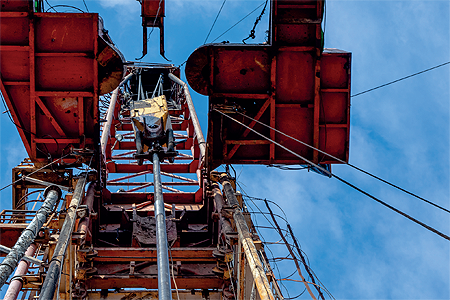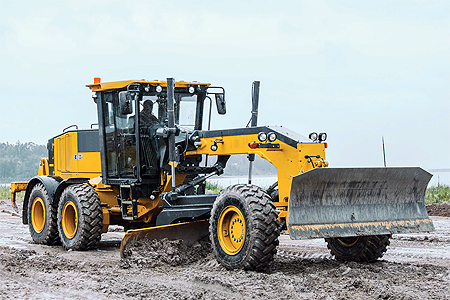Timor Resources
Open for business
Located in the Timor Sea north of Australia, just 465 miles from Darwin, is the first new sovereign state of the 21st century – East Timor (also known as Timor-Leste). Comprising the eastern half of the island of Timor, plus the nearby islands of Atauro and Jaco, and Oecusse, an exclave on the northwestern side of the island surrounded by Indonesian West Timor, Timor-Leste is keen to advance its economy and has ambitious plans for its future. Since Timor-Leste gained independence from Indonesia, all its elected governments have been working on a 2011-2030 Strategic Plan as the foundation to the country’s development framework. Private investment plays a central role to  these long-term goals, with the energy industry as the core. Ready to invest in the oil and gas market, the country is keen to promote that it is ‘open for business’.
these long-term goals, with the energy industry as the core. Ready to invest in the oil and gas market, the country is keen to promote that it is ‘open for business’.
Indeed, the onshore oil and gas potential of Timor-Leste has long been recognised but has remained largely untapped and under-explored due to historic geopolitical issues. With a politically stable government (since 2001), the country has shifted its focus to onshore oil and gas activities to complement the significant exploration and development success achieved offshore in the Timor Sea.
One company set to play a pivotal role in the growth of the onshore oil and gas sector in Timor-Leste is Timor Resources, a privately-owned Australian oil and gas company backed by NEPEAN™, Australia’s leading privately owned engineering, mining services and industrial manufacturing organisation. Timor Resources, in a joint venture with the State-owned TIMOR GAP, is the first company in over 40 years to have obtained the rights to explore and develop onshore oil and gas resources within Timor-Leste.
In 2017, it acquired a 50 per cent participating interest in two Blocks – PSC TL-OT-17-08 (Block A) and PSC TL-OT-17-09 (Block C) – via the execution of Production Sharing Contracts (PSC) with Autoridade Nacional do Petróleo e Minerais (ANPM), a government authority of the Democratic Republic of Timor-Leste.
Timor Resources is the Operator of both Blocks and will carry TIMOR GAP on the terms of the joint operating agreement (JOA) through exploration and appraisal. Exploration targets and leads have been identified in both Blocks, in areas known for oil and gas seeps. The exploration programme is underway, with the objective of upgrading the identified leads to prospects and taking this from a frontier exploration play to the development and production phase.
As Suellen Osborne, CEO and Director of Timor Resources explained, Block A and C combined represent 2012 km2 of highly prospective acreage. “They have multiple targets and play types, and are supported by the prospectivity of the known 30 onshore oil seeps,” she said.
Significant investments
Since the project began, Timor Resources has acquired 720 line kilometres of 2D seismic in the permits during 2018 and 2019, and identified nine drillable targets. “We were on track to drill the first well on 1 June 2020, but due to the impact of the Covid-19 pandemic, concern for the health and safety of the drilling teams, combined with travel restrictions and quarantine requirements, drilling has been delayed by three months,” added Suellen. “Assuming the company is able to continue post Covid-19, the intention is to drill five exploration wells, back to back. These wells are drilled in pursuit of oil reservoirs containing more than 142 million barrels of P50 unrisked, recoverable oil in.”
Furthermore, to accelerate the exploration programme planned for Block A and C, Timor Resources is undertaking a capital raise, seeking a direct equity investment into Timor Resources TIN (a permanent in-country establishment and a wholly owned subsidiary of the company.)
The next milestone for Suellen and the team at Timor Resources is the drilling of the first well onshore. Named Karau-1, it will be the first exploration well drilled in a planned five well programme to evaluate acreage within Timor-Leste in Block A. There is evidence of a working petroleum system in the area, thanks to surface oil seepages and oil contamination in shallow water wells, stratigraphic bores and offset wells.
“This well will be located 33m above mean sea level and approximately 5.5 km north of Suai Port and Urban Area. Eastern Drilling Rig No. 1, a 1000 Hp refurbished land rig moved cominto the area from the USA, will be used to drill the well,” Suellen explained.
Depending on the results gained from the five well drilling programme, Timor Resources will be looking to undertake significant further investments in the project to continue its momentum. “We have already invested more than US$30m into exploration on the South Coast of Timor-Leste. Success from the drilling campaign will lead to the need for new infrastructure and tank storage, and that will require a further investment of US$50m-$100m, to facilitate the export of oil, subject to the declaration of the discovery size post our drilling campaign,” Suellen noted.
Referring to the need for infrastructure, the Timor-Leste Government has completed 60 per cent of the new freeway connecting the Timor -Leste petroleum corridor on the South Coast with the capital Dili. The proposed petroleum corridor will form the backbone of the Timor-Leste petroleum industry. Named the Tasi Mane projects, they are a multi-year development of three economic clusters that the government has committed to and is currently building. Over US$1 billion in State funds have been pledged by 2021 towards the Tasi Mane projects, with US$378 million having already been spent on the freeway in 2016-2019. The project is a key pillar of the country’s Strategic Development Plan and it is on track to meet its 2020 targets.
Tasi Mane includes the construction and operation of a refinery, a petrochemical plant, an LNG plant, and a highway linking the economic clusters and a network of gasoline stations to ensure high quality fuel distribution across Timor-Leste. The projects will support commercial onshore discoveries and the development of the offshore Woodside-operated Greater Sunrise fields. “This project includes the Suai and Betano Clusters that overlap Block A and C,” added Suellen. “TIMOR GAP, our JV partner in the onshore development of Blocks A and C, represents the country’s participation in petroleum activities and this includes a mandate to implement the Tasi Mane projects.”
Dedicated to success
The objective of Tasi Mane is to enable petroleum and energy development within Timor-Leste, providing a direct economic dividend from the petroleum industry activities to the country. Without these value-adding projects, the country would be limited to the royalties and taxes generated by multinational offshore operations. “We recognise the importance of the development of the oil industry onshore for Timor-Leste,” noted Suellen. This is not only in economic terms, but also how increased investments and developments will open up job opportunities and wider  social improvements for the communities on the island. “We genuinely care for the people of Timor-Leste and we are focused on the small rural communities that live in our contract areas,” she continued. “Poverty levels in Timor-Leste are very high, with more than 60 per cent unemployment in the country. The activity of Timor Resources is recognised as an important project for the nation, which will create significant ongoing employment for the country, potential revenues streams through royalties and states take of profit petroleum that may have a big impact on changing the level of poverty in the country.”
social improvements for the communities on the island. “We genuinely care for the people of Timor-Leste and we are focused on the small rural communities that live in our contract areas,” she continued. “Poverty levels in Timor-Leste are very high, with more than 60 per cent unemployment in the country. The activity of Timor Resources is recognised as an important project for the nation, which will create significant ongoing employment for the country, potential revenues streams through royalties and states take of profit petroleum that may have a big impact on changing the level of poverty in the country.”
Timor Resources has already provided employment for more than 550 Timorese local people during its seismic campaigns, as well as establishing an in-country presence, with a permanent office located in Dili, employing a group of highly experienced staff on a full-time basis, across the strategy, operations and finance functions. It is also committed to open and accountable processes that encourage stakeholder engagement throughout all stages of project development. “We have created an extensive and ongoing stakeholder engagement programme that builds on the pro-active approach to consultation that commenced in early 2016 after identifying the opportunity in Timor-Leste,” added Suellen. “Stakeholders consulted include a broad range comand diverse cross-section of government, industry and community representatives.”
Looking forward, Suellen is confident that under the watchful eye of its experienced board and management team, by the fourth quarter of 2020, Timor Resources will be undertaking drilling operations. This is an admirable achievement in a very short 36-month timescale since targeting assets from which to produce, and illustrates the professionalism of Timor Resources and its dedication to ensuring that new oil and gas development on Timor-Leste is a success. “We will continue to train and support the Timorese people to take on jobs in the new business,” she concluded, “as well as continue to actively promote the Timor nation. This is an exciting time in the history of Timor and we proud to be working in this beautiful country, in pursuit of a brighter future for the Timorese people.”
Timor Resources
Services: Privately-owned oil and gas company